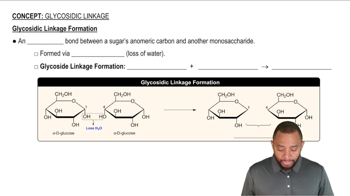Carbohydrates are abbreviated using a three-letter abbreviation followed by their glycosidic bond type. For example, maltose and sucrose can be written respectively as
Provide the structure for the O-type blood carbohydrate set given the following abbreviation:
L-Fucα (1→2) Galß(1→4)GlcNAc





